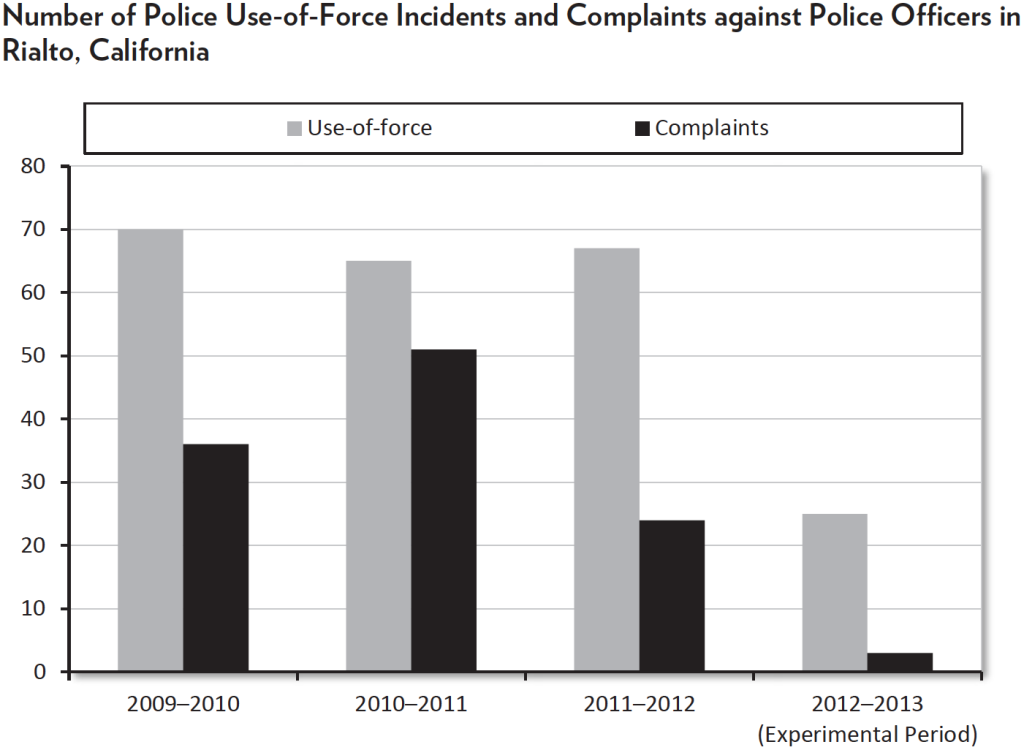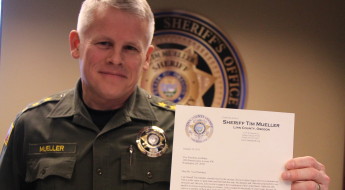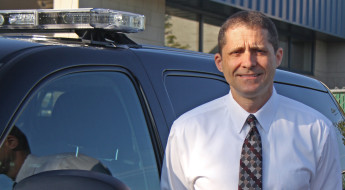Not a day goes by without a headline popping up somewhere in the United States (or the rest of the world) about another case of police brutality. Whether it’s an officer Tasing someone, shooting an unarmed person, or using their baton a little too roughly, the daily news wouldn’t be complete without an accusation against the police. In many situations, that’s exactly what they are: accusations. However, without any solid evidence and only the statements of the parties involved, things get complicated – very complicated.
Since the dawn of time, people have defied authority. And what better way to defy said authority than blaming them for something that causes everyone else to be angry at them, especially when it comes to the police. Over the past few years, there have been several instances of officer involved shootings where it is still not 100 percent clear on what happened. In 2014, Ferguson Police Officer Darren Wilson shot and killed Michael Brown; this sparked an outrage and riots around the country [4]. In 2012, Trayvon Martin was shot and killed by an armed neighborhood watch guard in Florida. Again, there was no evidence of what happened [1]. More recently, the FBI and Oregon State Police shot and killed one of the armed militia members that was part of the standoff in Malheur County. While there is video from an FBI helicopter, it’s not clear and there is still outrage over the shooting.
In order to curb the number of accusations against officers, many police forces have started equipping their officers with on-officer video cameras, or bodycams [3]. Studies have shown that not only does this significantly decrease the number of complaints against the officers, but it also changed the behavior of the officers [6]. It was also found that the number of ‘stop-and-frisks’ decreased significantly during the trial period conducted by multiple departments in opposite corners of the country. However, it was determined that it was more likely for officers to stop and cite someone [5][6].

Source: “The Effect of Police Body-Worn Cameras on Use of Force and Citizens’ Complaints against the Police: A Randomized Controlled Trial”
Today, there is still a still a steady increase in the adoption rate of bodycams, but there are still a few downfalls. Privacy is the number one concern among both police and citizens. With a camera on the officer’s uniform always recording, it can make some uncomfortable, perhaps feeling like their privacy is being violated [5]. Technological difficulties is another major issue being faced by police departments across the world, particularly when it comes to training officers on the use of the camera and coming up with a system and location for storing the files [2].
While this is just the start to what is a very long road of acceptance, adoption, and accountability, bodycams are being accepted more and more, not just for the protection of the citizen, but also the officer [3]. Companies are creating cloud storage services for police departments to store their video, also showing if they’ve been altered in any way [9]. Police departments are accepting that they will have to be transparent and accept scrutiny, as well as deal with Freedom of Information Act requests [8]. Some states have also begun enacting laws stating that it is completely legal for citizens to video- and audio-record the police while they are performing their duties, essentially serving the same role as a bodycam. Oregon is one of these states as of January 1, 2016 [7].
Sources:
[1] Alcindor, Yamiche. “TRAYVON.(NEWS)(Trayvon Martin).” USA Today, December 12, 2012.
[2] Ariel, Barak, William Farrar, and A. Sutherland. “The Effect of Police Body-Worn Cameras on Use of Force and Citizens’ Complaints Against the Police: A Randomized Controlled Trial.”Journal of Quantitative Criminology 31, no. 3 (2015): 509-35.
[3] Davis, Kevin. “Candid Cameras: After Ferguson and North Charleston, More Police Are Learning to Deal with Wearing Body Cams.” ABA Journal 101, no. 6 (2015): 15.
[4] Feeney, Matthew. “Watching the Watchmen: Best Practices for Police Body Cameras.” CATO Institute Police Analysis no. 782. 2015.
[5] Freund, Kelly. “When Cameras Are Rolling: Privacy Implications of Body-mounted Cameras on Police.” Columbia Journal of Law and Social Problems 49, no. 1 (2015): 91-133.
[6] Ready, Justin, and T. Young. “The Impact of On-officer Video Cameras on Police–citizen Contacts: Findings from a Controlled Experiment in Mesa, AZ.” Journal of Experimental Criminology 11, no. 3 (2015): 445-58.
[7] State of Oregon. “Oregon Laws 2015: Chapter 553.” OregonLegislature.gov. 2015.
[8] White, Michael D., and United States. Office of Justice Programs, Issuing Body. Police Officer Body-worn Cameras : Assessing the Evidence. 2014.
[9] Wiltz, Chris “Watching the Watchmen: The Hows and Whys of Body-worn Police Cameras.” Design News70, no. 1 (2015): 9.
Source Analysis:
Note: I have nine sources, but some of them were only for basic information such as dates and laws. I will not include these in my analysis. I bolded the ones above that I will be using for my analysis.
[2]: The Effect of Police Body-Worn Cameras on Use of Force and Citizens’ Complaints Against the Police: A Randomized Controlled Trial
I found this article, which is part of the Journal of Quantitative Criminology, by searching for “police body cameras” on OSU’s library database. I chose it for a multitude of reasons. First, it was used as a source in another article. Second, I chose it because it was recently published and is quick and to the point. It provided plenty of information in a short document. The source is a peer-reviewed journal of criminology, making it both credible and objective since their focus is on fairness and following the law. It is relevant because it is directly related to law enforcement.
[3]: Candid Cameras: After Ferguson and North Charleston, More Police Are Learning to Deal with Wearing Body Cams
This source was found using the OSU library database, searching for “police body cameras.” I chose it because it discussed several recent issues (accusations against police) as well as what the police are doing to resolve those issues (using bodycams). The article comes from an objective source, The American Bar Association. Also, coming the standard for those practicing law, I feel that it is also a very credible source. This article is very relevant to the topic because it discusses past issues, how they’re being taken care of, what obstacles they’re running into, and what the outcome is of everything.
[4]: Watching the Watchmen: Best Practices for Police Body Cameras.
This peer-reviewed article is perhaps one of the best resources I found while doing my research. Not only was it easy to read (in terms of layout), but it also has graphics (see above) and referenced several other sources that I was able to find and use. This article was found using the same search term on the OSU library database as the other articles, “police body camera.” CATO Institute is a think-tank organization that focuses on public advocacy and is one of the top think-tanks in the nation. This makes them both credible and objective for this research. The source was also very relevant, especially since it directly addressed the issue I am focusing on and it was published in the last few months.
[6]: The Impact of On-officer Video Cameras on Police–citizen Contacts: Findings from a Controlled Experiment in Mesa, AZ
I chose this source for a few different reasons, the primary being that it discusses exactly what I’m researching. I also found this article to be interesting because of where the test group is located: Mesa, AZ. I used to live in Mesa and in the three years that I lived there, I never once heard anything good about the police, but rather that they’re ‘dirty cops.’ I found it interesting that they’re doing what they can to remedy that tarnished reputation. This article was found using the term “police body camera” on the OSU library database. The source, which comes from the Journal of Experimental Criminology, is both credible and objective for the same reason as above, it’s a peer-reviewed journal of criminology. It, too, is relevant, focusing on the exact issue on hand, even though it discusses events that happened a few years ago.
[9]: Watching the Watchmen: The Hows and Whys of Body-worn Police Cameras
This article was found using the same search term, “police body camera” on the OSU library database. Unfortunately, this seemed to be the only term I was able to use to find any good information, and I found quite a bit of it. I chose this article because of its approach toward every day people. It discusses the technological details on the bodycams, and specifically directs it toward anyone, no matter how they feel about the issue of police having bodycams. Because of this, I feel that they are very objective. I’m not too sure if this is a credible source, but considering it’s only giving facts on the equipment and programs the government has in place, not opinionated things, I would say that this article is credible. It is a very relevant source because it talks about the technical aspects of the cameras while the rest of the articles mainly discuss the legal outcomes.




